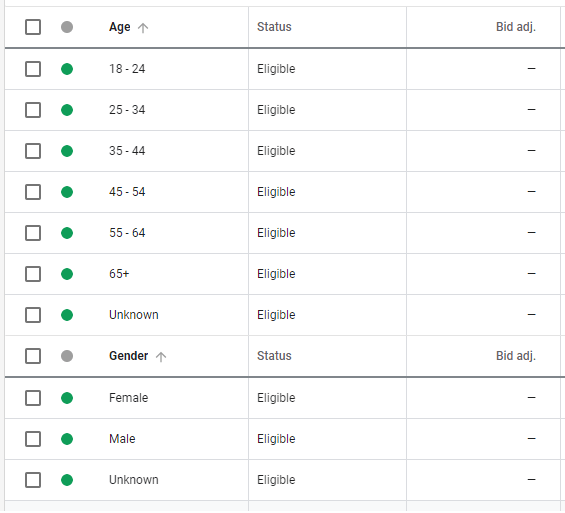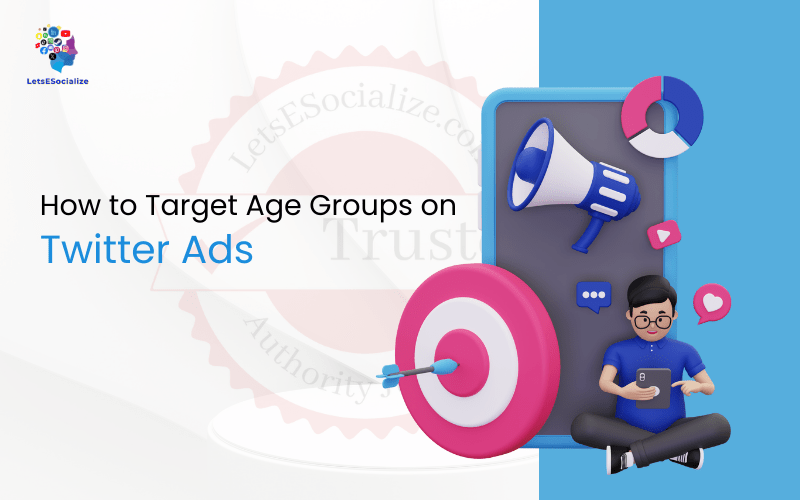One of the most powerful targeting options available on Twitter ads is the ability to reach specific age groups. Tailoring your ad campaigns toward certain age ranges allows you to hone in on the segments of the Twitter audience that are most relevant to your brand.
In this comprehensive guide, we’ll explore why age is an important demographic to consider when advertising on Twitter. We’ll also provide step-by-step instructions on how to target Age Groups on Twitter Ads platform.
Table of Contents
Overview of Twitter’s Audience Age Breakdown
Before creating targeted ad campaigns, it’s helpful to understand the age composition of Twitter’s overall user base. Here is a breakdown of Twitter’s audience by age group as of October 2023:
| Age Group | Percentage of Twitter Users |
|---|---|
| 13-17 years | 9% |
| 18-29 years | 41% |
| 30-49 years | 29% |
| 50-64 years | 13% |
| 65+ years | 8% |
As the table shows, Twitter has strong penetration among younger and middle-aged adults, while senior audiences are less widely represented. This breakdown should inform how you tailor age targeting for your campaigns.
Also read: Targeting Options in Twitter Ads
Benefits of Targeting Age Groups on Twitter

Here are some of the key reasons to focus your Twitter ads on specific age ranges:
Improved Conversion Rates
Ads matching the age of your ideal buyer persona see higher engagement and conversion rates. Targeting removes age groups unlikely to purchase.
Enhanced Relevance
You can personalize messaging and offers based on what resonates with specific life stages and priorities.
Competitive Appeal
Winning market share for customers within your industry often depends on luring certain age segments away from competitors.
Brand Preference Shaping
Getting your brand in front of younger consumers early on helps build advocacy and shape future lifetime loyalty.
Life Event Timing
Certain products and services tie closely to major life events and ages, like college, marriage, children, retirement, etc.
Age-Based Influencers
Influential Twitter users with large followings can be targeted based on age to maximize exposure.
Overall, incorporating age-based targeting into your Twitter approach can significantly amplify your results. It helps increase engagement, lift conversion rates, and drive more sales from your ad spend.
Also read: Twitter Ads to Target Competitors
Step-by-Step Guide to Target Age Groups
Targeting specific age ranges on Twitter is quick and easy within their Ads Manager platform. Here is a step-by-step walkthrough:
Step 1: Access Twitter Ads Manager
Log into your promoted Twitter account and navigate to the Ads Manager dashboard. Click the “+” button to create a new campaign.
Step 2: Select Campaign Objective
Choose a campaign objective like “Tweet engagements” or “Followers” that matches your goal. The objective will inform recommended targeting.
Step 3: Set Up Targeting Details
Within the “Audience” targeting section, open the Demographics menu. Here, you will see detailed age-targeting options.
Step 4: Enter Age Ranges
You can target using preset age groups like 18-24 or customize ranges like 27-32. Enter all the age targets relevant to your campaign.
Step 5: Review Age Targeting
Double check the ages look accurate under the “Audience definition” section before moving forward. You can broaden or narrow it down later.
Step 6: Complete Campaign Setup
Finish setting up ad creative, placements, bid strategy, and budget before launching the age-targeted campaign.
Step 7: Monitor Performance
Analyze age group performance in Analytics to see which are driving the most conversions. Adjust targeting and creativity per age appropriately.
With this simple process, you can effectively target all of Twitter’s key demographics. Always be sure to test and optimize based on results.
Best Practices for Targeting Age on Twitter
Here are some top tips to help you get the most out of targeting age groups with your Twitter ads:
- Match age ranges to your buyer personas and customers. Save your budget on relevant ages.
- Test different age brackets to find the demographic sweet spot for your business.
- Use age and interests together to further refine your audience (e.g. 18-24 tech enthusiasts).
- Ensure your ad creative and messaging align with the priorities of each age group.
- Monitor analytics dashboards to identify top-performing ages and continuously optimize towards them.
- Expand campaigns to new complementary age targets once initial tests prove successful.
- Bid higher on ages, providing the strongest conversion rates to maximize volume.
- Reuse high-performing ad creative and copy tailored to certain demographics.
- Make promotions time-bound to incentivize desired age groups to take immediate action.
With strategic planning and ongoing optimization, targeting age provides a sizable advantage in reaching the consumers most likely to engage your brand on Twitter.
Targeting Tips for Reaching Specific Age Groups

To inspire your age-targeting efforts, here are examples of effective strategies for reaching some of Twitter’s top demographics:
Teens (13-17)
Leverage interests like gaming, influencers, music, and sports teams. Use youthful and creative. Promote contests and experiential events.
Young Adults (18-29)
Prioritize mobile. Target college locations and topics. Focus on life milestones like graduation, first job, and moving out.
Parents (30-49)
Target family/parenting interests and locations. Advertise back-to-school savings and family offers. Prime holiday shopping season.
Middle-Aged (35-54)
Target career and finance accounts/interests. Advertise services that offer more leisure time and lifestyle upgrades.
Retirees (65+)
Use terms and hashtags related to retirement, travel, health, and insurance. Focus ad spend on high-intent purchase periods.
These examples demonstrate how customizing for each age group requires research, testing and local knowledge. But the effort pays off in engagement.
Optimizing Age Ranges Over Time
One important best practice is monitoring your age, targeting continuously, and optimizing ranges when needed. Here are some signs it’s time to adjust your age groups:
- Certain age segments consistently underperform
- You launch new products appealing to different demographics
- Major real-world events suddenly impact audience priorities
- Your brand initiatives focus on reaching new age groups
- Competitors start targeting complementary age ranges
- Conversion rates and engagement change across current age targets
Stay on top of your campaign analytics dashboards to spot when age optimization is required. Be ready to test new ranges or expand your targeting.
Troubleshooting Common Age Targeting Issues
Here are solutions to some common challenges that arise when targeting age groups on Twitter:
Low match rates – Broaden your targeting to 10+ year age ranges or loosen your geographic targeting.
Spikes in CPC – Add negative targeting for competitors also bidding on the same ages.
Dips in engagement – Refresh your ad creative, offers, and messaging to resonate better with the age group.
Poor conversions – Tighten your age range or layer on additional targeting like interests to qualify the audience.
Underdelivering spend – Raise your bid strategy if there is high competition for your chosen age range.
Fatigued audiences – Try alternating or pausing age groups being targeted to prevent oversaturation.
Addressing these types of issues promptly allows you to maximize results from age targeting over the long term.
Twitter Age Targeting Case Studies
Here are real-world examples of brands effectively using age ranges in their Twitter ad campaigns:
Microsoft – Young adults for Xbox Game Pass trial
Targeted ages 18-35 interested in gaming to promote a free Xbox Game Pass trial. This resulted in 68% more conversions among the young adult segment.
Planet Fitness – Middle-aged adults for membership promotion
Targeted ages 35-55 locally to advertise a discounted gym membership. Saw 22% lower cost per membership compared to other targets.
Disney+ – Parents for streaming service bundle
Targeted 30-49 age range with interest in family entertainment to promote a Disney+/Hulu bundle. Generated 66% more sign-ups from parents compared to other targets.
AARP – Retirees for health insurance consultation
Targeted 60-75 ages with retirement-related interests to drive calls for health insurance consultations. Lowered cost per call by 58% among the retiree age group.
As these examples demonstrate, matching age targeting to demographics that align closely with your brand and offering pays dividends across every industry and vertical.
Frequently Asked Questions
-
What age group is Twitter most suitable for targeting?
Twitter is most popular among 18-49 year olds. Around 70% of its active user base falls within that age range. Teens and younger adults also over-index on Twitter usage and engagement.
-
What is the minimum age to use Twitter?
Twitter officially requires users to be aged 13 and older. However, there are no age verification measures in place when signing up.
-
Does Twitter allow age targeting for sensitive product categories?
Categories like gambling, alcohol, politics, and more have restrictions. Always adhere to your local ad content regulations.
-
What is the maximum age that can be targeted on Twitter?
There are no max age limits, but targets beyond 70+ see limited reach due to lower Twitter usage rates among seniors.
-
Can I target both broad and precise age ranges together?
Absolutely. Layering a tight 18-24 target with a broader 18-40 target allows you to customize messaging efficiently.
Conclusion
Targeting specific age groups allows brands on Twitter to craft campaigns that deeply resonate with the consumers most likely to engage. An audience broken down by life stage is an audience primed for your ads.
Follow the strategies outlined in this guide to begin implementing age demographic targeting on Twitter. Always optimize your efforts based on performance data. With the right age focus, your ad spend will convert higher, and your brand will strengthen its bonds with priority demographics.






